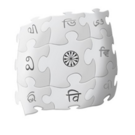Talk:Main Page
Add topicIndian Cultural Heritage: A Rich Tapestry of Tradition and Diversity
India is a land steeped in ancient civilizations and vibrant traditions, offering a cultural heritage that is both diverse and deeply meaningful. With a history that spans thousands of years, Indian culture can be seen as a colorful mosaic made up of numerous threads—each representing elements like history, religion, art, language, and age-old customs. This heritage, shaped by countless dynasties, communities, and influences, continues to flourish, making India an extraordinary wellspring of human civilization.
A Historical Legacy
The roots of India’s cultural heritage stretch back to the Indus Valley Civilization (around 3300–1300 BCE), one of the earliest urban societies on the planet. Sites like Harappa and Mohenjodaro showcase advanced urban design and remarkable craftsmanship. Throughout the centuries, great empires such as the Mauryas, Guptas, and Mughals have left a lasting impact on India’s cultural landscape. The architectural wonders of ancient India—the intricate temples of Khajuraho, the stunning rock-cut caves of Ajanta and Ellora, and the awe-inspiring Taj Mahal—are testaments to artistic brilliance and spiritual significance.
Religious and Philosophical Diversity
India is the birthplace of major religions, including Hinduism, Buddhism, Jainism, and Sikhism, each contributing to the nation’s cultural fabric. The harmonious coexistence of these faiths alongside Islam, Christianity, Zoroastrianism, and others fosters a unique spirit of pluralism. Sacred texts such as the Vedas, Upanishads, Bhagavad Gita, and Guru Granth Sahib have greatly influenced philosophical thought, highlighting core concepts like dharma (duty), karma (action), and moksha (liberation). Festivals like Diwali, Holi, Eid, Christmas, and Guru Nanak Jayanti are celebrated with great enthusiasm, further emphasizing India’s unity in its rich diversity.
Art, Music, and Dance
India’s cultural heritage comes alive through its myriad art forms. Classical dance styles such as Bharatanatyam, Kathak, Odissi, and Kathakali beautifully express stories through intricate movements and emotive expressions, often inspired by mythology. Indian music, encompassing classical genres like Hindustani and Carnatic along with folk and contemporary styles, reflects the country’s emotional depth and spiritual resonance. Visual arts, ranging from vibrant Madhubani paintings to detailed Tanjore art, showcase regional diversity and craftsmanship. Additionally, Indian cinema, particularly Bollywood, stands as a global ambassador of its culture, gracefully intertwining storytelling with music and dance.
Language and Literature
With 22 official languages and countless dialects, India’s linguistic diversity is truly unparalleled. Sanskrit, among the oldest languages, has given rise to literary masterpieces such as the Ramayana and Mahabharata. Regional literature in languages like Tamil, Bengali, Urdu, and others has significantly enriched the cultural landscape. Modern Indian writers, including Rabindranath Tagore—who won the Nobel Prize for Literature—and contemporary authors, continue to draw inspiration from this rich heritage, beautifully marrying tradition with modern storylines.
